Walrus Audio R1 Handleiding
Bekijk gratis de handleiding van Walrus Audio R1 (11 pagina’s), behorend tot de categorie Niet gecategoriseerd. Deze gids werd als nuttig beoordeeld door 3 mensen en kreeg gemiddeld 4.4 sterren uit 2 reviews. Heb je een vraag over Walrus Audio R1 of wil je andere gebruikers van dit product iets vragen? Stel een vraag
Pagina 1/11

The [ACS1]™ is an amplifier and speaker cab simulator delivering the sound and feel of world-
class amplifiers with controllable room size and complimentary speaker cabinets created by Tone
Factor and York Audio. With the ACS1, players have expansive options to deliver their tone on stage,
in the studio, or practicing at home. Simple controls, stereo in and out, onboard presets, and MIDI
support make the ACS1 an immeasurable tool in any guitarist’s arsenal.
*The use of an isolated power supply is recommended for powering all Walrus Audio Pedals.
Daisy chain power supplies are not recommended.
Got questions or need a repair?
Email help@walrusaudio.com to talk with a real live human about your Walrus gear!
This product comes with a limited lifetime warranty.
Click Here for more info.
9 volt DC, Center Negative • 300mA min*
Amp Knob - Press down on the Left encoder to cycle through six different
classic amp models built into the ACS1.
Designed using a detailed physical modeling-based simulation of the
original circuity, each of the cascading triode/filtering stages has been
faithfully replicated, creating complex tones rich with even harmonics
and subtle intercomponent asymmetries/inconsistencies. The power amp
staging has been highly biased to retain plenty of dynamic warmth and
headroom during Class A behavior at low gains, shifting into an increased
sensitivity and overdrive in Class AB saturation to complete Valve breakup
at maximum.
Fullerton: Inspired by the classically snappy and clear Fender® Deluxe
Reverb. Clean headroom that blooms into the fat, rich breakup that
players have come to love over the years.
London: Inspired by a 1962 Marshall® Bluesbreaker with a harmonically
rich, valve-driven breakup. Perfect for sustained lead notes with tons of
gain on tap and a punchy mid-ranged voicing.
Dartford: Inspired by the legendary and jangly tones from a 1960s Vox®
AC30 with all the bite and chime from the British Invasion. Higher gain
settings offer plenty of saturation that represent the loudness and punch
of the original amp cranked.
AMP MODELS

Red: Inspired by the distinctively raw and punchy Peavey® 5150, producing
heavy, aggressive modern metal and hard rock sounds. Powerful and
saturated with a tight low end, strong midrange, and a bright, cutting
high end.
Citrus: Inspired by the warm, rich, and harmonically complex Orange®
Rockerverb. Classic British gain with a creamy midrange and punchy
lows. Maintains clarity and definition across its entire tonal spectrum,
even at high-gain settings.
Tread: Inspired by the world-famous Mesa Boogie® Dual Rectifier with
massive amounts of in-your-face gain. Versatile enough to be favored by
guitarists in genres from classic metal to punk, Tread offers up plenty of
saturation that’s heavy and ready to cut through the mix.
AMP MODELS: HIGH GAIN
The ACS1 comes stocked with 12 different cabs accessed by simply pressing down on the Cab knob to
cycle through the available options. Cabs 1-6 were created by Tone Factor to pair with the Fullerton,
London, and Dartford amp models while 7-12 were created by York Audio to pair with the Red, Citrus,
and Tread amps, but feel free to mix and match to your liking!
The first six custom IRs are engineered by David Hislop and Kenyon Reed at Tone Factor. These IRs
are based on a 90’s UK-made AC30 6TB with Blue Alnicos, a Marshall JTM50 Tremolo Bluesbreaker
2x12 combo with UK-made 6402-cone G12M Greenbacks (16ohm versions that come in Marshall cabs,
which are brighter than the 8ohm versions in Vox cabs), and a Vintage 1966 Fender Deluxe Reverb
with it’s original Jensen C12NA. Visit tonefactor.co to explore all of the complete IR packs with more
microphones and placement options.
Cabs seven through twelve are engineered by Justin York at York Audio. These IRs are based on a
Mesa Oversized 4x12 cabinet with Celestion Vintage 30s, an Kerry Wright 4x12 cabinet with Greenback
M25s, and a Marshall 1960bv 4x12 with Celestion G12 speakers. Visit yorkaudio.co to explore their
complete IR packs with more microphone and placement options.
Cabs:
1: ‘66 Fender® Deluxe Replication / SM57
2: ‘66 Fender® Deluxe Replication / Royer 121
3: Marshall® JTM50 Bluesbreaker Replication / SM57
4: Marshall® JTM50 Bluesbreaker Replication / Royer 121
5: Vox® AC30 6TB Replication / SM57
6: Vox® AC30 6TB Replication / Royer 121
CABS
7: Mesa® Oversized 4x12 / SM57 + Royer 121
8: Mesa® Oversized 4x12 / SM58 + Beyerdynamic M160
9: Kerry Wright 4x12 / SM57 + Royer 121
10: Kerry Wright 4x12 / Sennheiser MD412 + Telefunken U47
11: Marshall® 1960bv 4x12 / SM58 + Beyerdynamic M160
12: Marshall® 1960bv 4x12 / Sennheiser MD421 +
Beyerdynamic M160
PHOTO COURTESY OF TONE FACTOR

CONTROLS
VOLUME
LEFT ENCODER
ROOM
MIDDLE ENCODER
RIGHT ENCODER
INPUT JACKSOUTPUT JACKS
LEFT LEFT
RIGHT RIGHT
BYPASS SWITCH BOOST SWITCH
GAIN
Volume - The Volume knob controls the overall output level of the pedal. It also controls the volume of
the headphones out.
Gain - The Gain knob controls the amount of gain through the amp “circuit” within each model. The
amount of gain and character changes with each amp. The Gain knob also affects the overall volume just
like a real amp so you may want to increase the Volume knob at lower gain settings.
Room- The Room knob engages one of three types of space emulations. Turn clockwise to add a sense of
space to your signal.
Room Types:
Type 1: A tight room reverb meant to give the impression of your amp being mic’d up in various
size rooms. Turn it all the way down to disengage and turn it up to add a sense of space to your sound.
Type 2: A Hall reverb emulation that simulates the acoustics of large live sound spaces with decay
control.
Type 3: A Spring reverb emulation that simulates a tube amp’s spring reverb with decay control.
ADJUSTING PARAMETERS
When adjusting any knob parameter, you will see a bar appear on
the screen. The higher you turn up a parameter, the fuller the bar
will appear. The top left number is your stored preset value. The
top right number shows the value of where the knob is currently
set. The dot below the bar shows you the last value used before
turning the knob.
LAST VALUE USED
CURRENT VALUE
WHERE KNOB IS SET
PRESET
VALUE
NAME OF PARAMETER
BEING ADJUSTED
Product specificaties
| Merk: | Walrus Audio |
| Categorie: | Niet gecategoriseerd |
| Model: | R1 |
Heb je hulp nodig?
Als je hulp nodig hebt met Walrus Audio R1 stel dan hieronder een vraag en andere gebruikers zullen je antwoorden
Handleiding Niet gecategoriseerd Walrus Audio

14 Augustus 2025
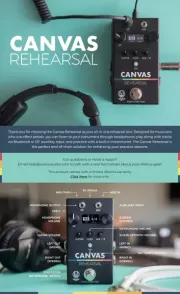
11 Augustus 2025

11 Augustus 2025
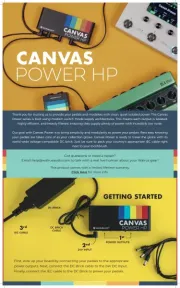
11 Augustus 2025

11 Augustus 2025

18 Juni 2025

15 Juni 2025

3 Juni 2025

24 Mei 2025
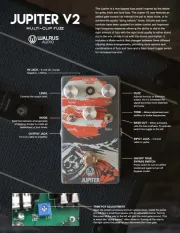
24 Mei 2025
Handleiding Niet gecategoriseerd
- UTEPO
- Baby Annabell
- De Buyer
- Stiga
- Merkel
- OnTruss
- 1Mii
- Aspen Avionics
- Alpen Kreuzer
- Mtx Audio
- GolfBuddy
- Stelton
- Alecto
- Blodgett
- Keurig
Nieuwste handleidingen voor Niet gecategoriseerd
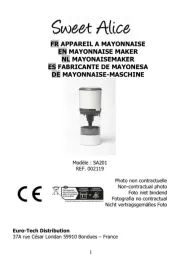
15 September 2025

15 September 2025

15 September 2025
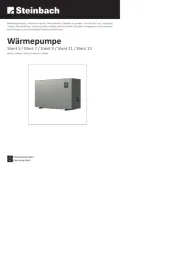
15 September 2025
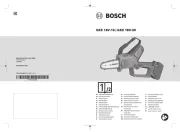
15 September 2025

15 September 2025
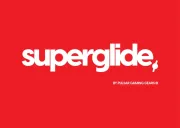
15 September 2025
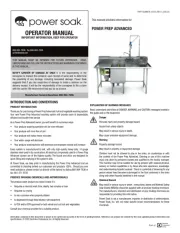
15 September 2025

15 September 2025
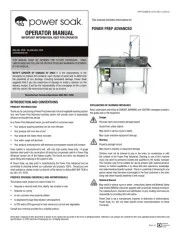
15 September 2025